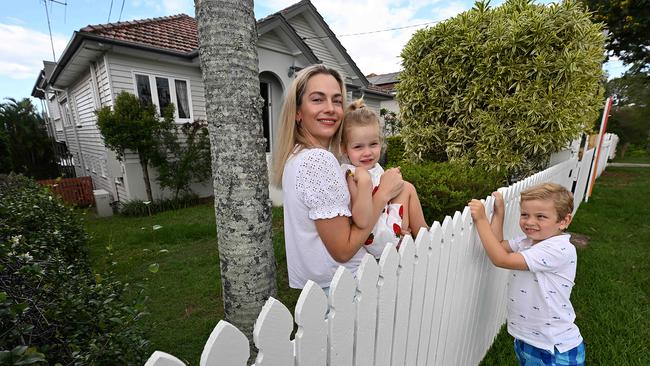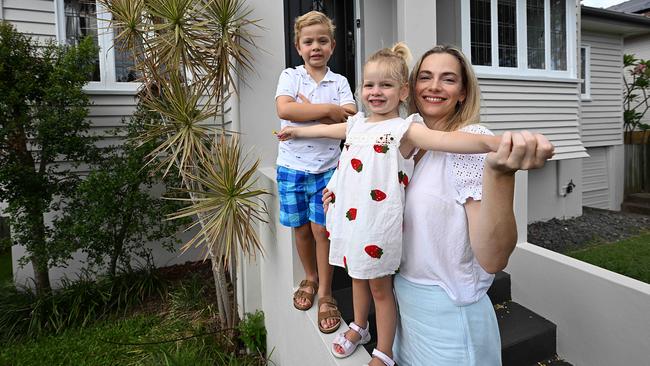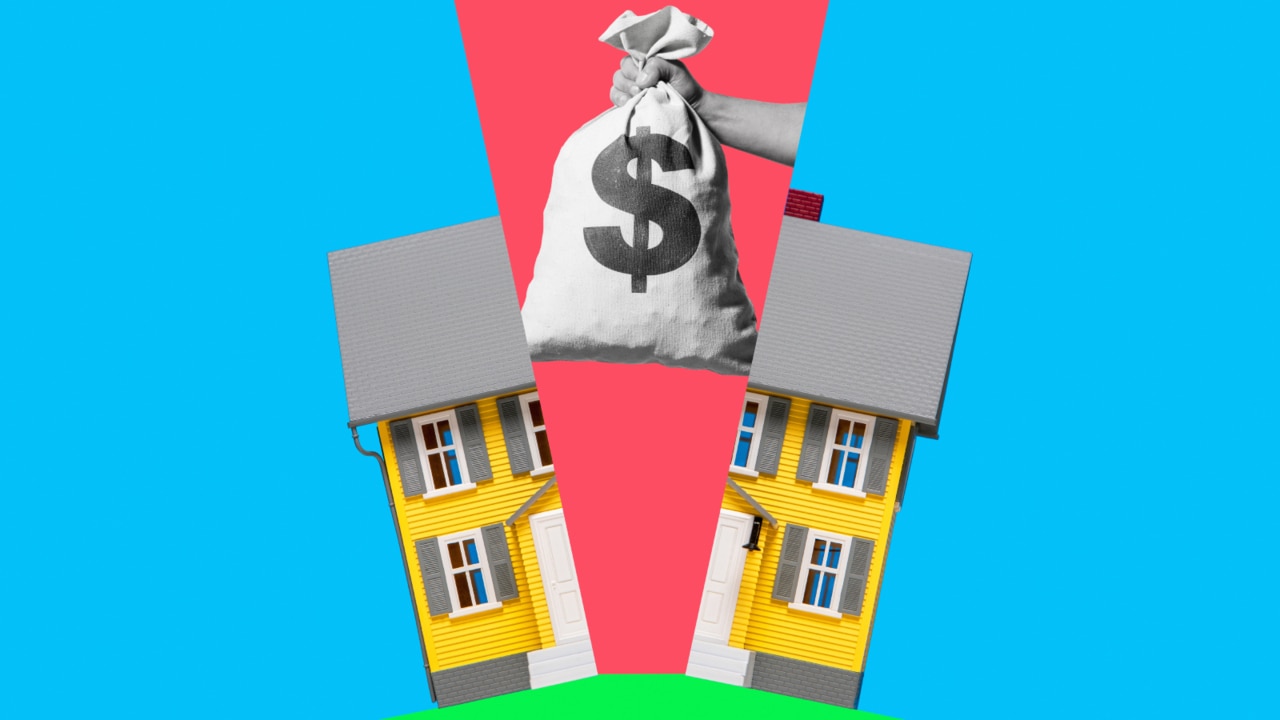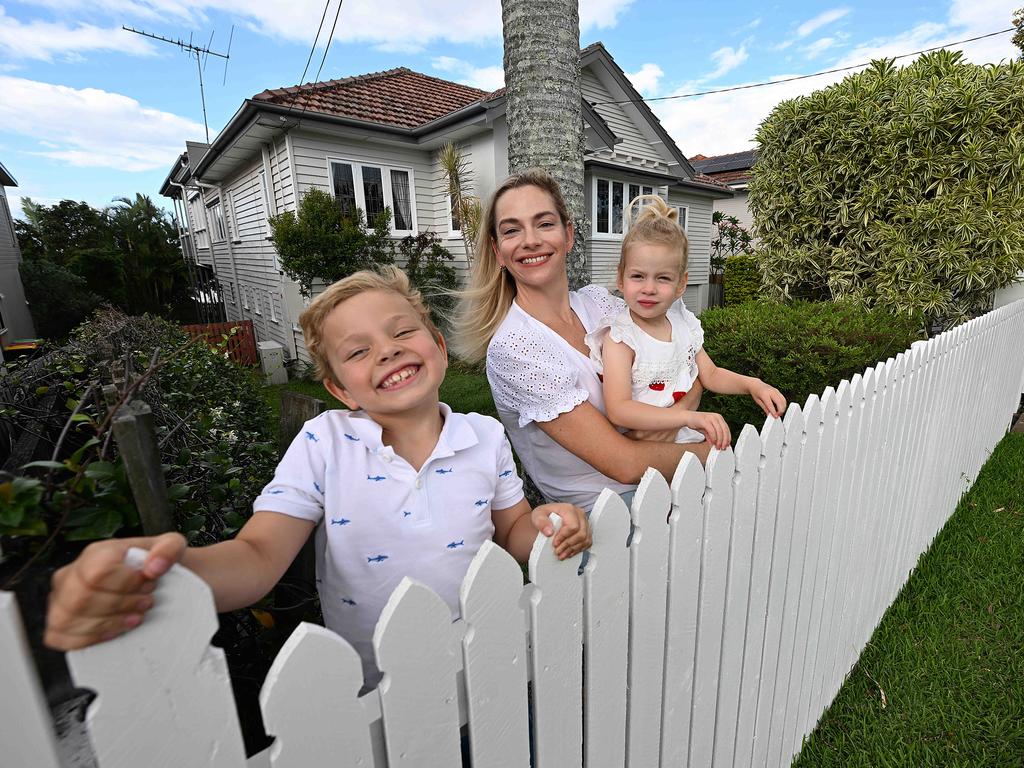Experts tip another year of living with the property bubble
Don’t expect the property bubble to burst this year as millennials drive demand for family homes. But all that could change soon, as Baby Boomers look to downsize en masse.

It’s the property bubble that just keeps on flying higher. And despite 13 interest rate rises in a row and world-leading inflation hitting hip pockets, experts say, Australia’s house and unit prices will continue to rise this year – though not with the same gusto as in recent years.
Put it down to the post-pandemic catch-up in immigration levels, shortfalls in residential building and an emerging wave of millennials (often helped along by the bank of mum and dad) buying into the dream of homeownership for a market that is among the most expensive in the world.
Remember the looming “mortgage cliff” and the nearly one million borrowers coming off fixed rates and facing the brunt of the interest rate rises during the past 18 months? Many were expected to bail, unable to pay thousands in extra repayments every month, with a flurry of emergency sales predicted to help drive prices down last year. But it didn’t happen; some seemingly just gave up indulgences such as $17 smashed avocado on toast and $6 latte at the local cafe, put the savings into the mortgage and managed to hold on to their homes.
Hopes of the bubble bursting, or even letting out a little air – as in 2018 when, after years of boom times, house prices in the bigger cities briefly nosedived, falling more than 10 per cent – fizzled out. Instead, house prices jumped 8.1 per cent on average across the country last year, according to housing researcher CoreLogic.
Sydney recorded growth of 11.1 per cent, with the median home now costing more than $1.1m. The biggest annual rise was in Perth, up 15.2 per cent; with Brisbane a little way behind, up 13.1 per cent; and Adelaide’s average prices going up 8.8 per cent. Melbourne was a long way behind with an average growth rate of 3.5 per cent and Canberra rising just 0.5 per cent. The only capitals to go backwards were Hobart, with the average price falling 0.8 per cent, and Darwin, down 0.1 per cent.
Banking and housing experts say although there was a new peak in property prices last year, the frenzied buying of the past few years has begun to dissipate. Buyers weren’t swarming over new listings in November and December, and properties are staying on the market for longer.
Real estate agents speculate that interest rates rises may have started to bite, with the higher cost of borrowings, or there has been lingering hope among buyers that bargains may appear on the other side of New Year’s.
Either way, prices flattened at the end of 2023 and the market went up only 0.4 per cent across the country last month.
But the flatlining won’t last long. This year, experts say, the market will continue to deliver gains for owners – after all, Australia is in the grip of a housing crisis and where there is a shortage of anything there is money to be made. Financial markets also predict the Reserve Bank of Australia will deliver two or three rate cuts, the first as early as May. But the market’s trajectory won’t be as steep and it will be patchy, depending on where the property is in Australia.
The consensus is that house and unit prices will increase, on average, by about 5 per cent at a national level. Smaller capitals are tipped to do better. PropTrack, the data and research arm of the REA Group (which owns Realestate.com.au), tells Inquirer it expects the biggest price rises this year will be again in Perth, where the average property costs $628,000 (the second cheapest in the country to Darwin) – increasing by at least 5 per cent and possibly as high as 8 per cent.
PropTrack says the rises are mainly down to a shortage of properties hitting the market. A similar pattern is also likely to play out in Adelaide, where a supply shortage will drive increases of between 4 per cent to 7 per cent. Brisbane, where gains are likely to be between 3 per cent and 6 per cent, also has a low stock of properties going on the market but prices are also are being driven by the continuing interstate migration.
It is a different scenario in the two largest capital cities. The price of housing in Sydney and Melbourne is the country’s most expensive, and interest rate hikes have a greater impact because mortgages are bigger. More homes in the outer-suburban mortgage belts are forecast to be listed for sale as homeowners succumb to mortgage stress, pushing prices down. As a result, Sydney’s growth is tipped to be up a more modest 2 per cent to 5 per cent, with Melbourne facing similar issues and PropTrack predicting its average price rises will range from 1 per cent to 4 per cent.
In the smaller markets, the volatility seems more pronounced and the prediction is that Darwin prices could fall by 3 per cent. PropTrack says Canberra is hard to predict, and could fall by 1 per cent or rise by 2 per cent, with Hobart possibly falling by 2 per cent or rising by 1 per cent.
PropTrack director of economic research Cameron Kusher says the property market will keep rising this year despite the broader Australian economy being expected to slow and the full impact of interest rates yet to fully take hold.
“The economy is expected to slow over the next 12 months, and unemployment rates to drift higher, and it’s reasonable to expect that (property) price growth would slow,’’ he says. “But equally, we find it hard to see a situation whereby prices start falling.
“It’s wealthier households broadly transacting stock. Also, if we look at the first homebuyer market, a stable interest rate environment will make it more attractive to try to buy a property if they have the capacity because of the state of the rental market.
“And we’ve still got quite a lot of a large gap between the cost of a new home and the cost of an existing home, which will continue to support prices in the established market, particularly as we’re nowhere near building enough to get to the 1.2 million goals over the next five years.”
Prices are, on average, 36.5 per cent higher across Australia than they were at the start of the decade. But after a rollercoaster few years of price rises and falls – with the falls in 2018, a rebound and then a slump at the beginning of 2020 before the boom in 2021 – industry players are predicting a shallowing of the peaks and troughs.
Geoff Lucas, chief executive of national real estate firm The Agency, says he believes the market will hold fewer surprises.
“We’re entering a period now of far less volatility, and the reason for that is simply the increased cost of mortgages,” he says.
“The probability is that we will see these levels of higher relative interest rates certainly for the majority of the year, and that’s reducing people’s borrowing capacity, which will have an impact on demand. That’s a good thing because buyers and sellers have more certainty about the price at which they’re going to transact.”
Demographer Bernard Salt says a factor in the sustained buoyancy of the market is the emergence of millennials driving demand for family homes. The cohort, aged between their late 20s and early 40, is giving up apartment living in the trendy inner city (whether rented or owned) for the three-bedder in suburbia as they increasingly embrace the “family formation stage”.
“Millennials now are the biggest consumer group, biggest taxpayer group, biggest worker group in Australia,” he says.
“Five million people in a nation of 26 million people are pushing into that stage in the life cycle where they need their forever home and their income continues to rise. More and more millennials are competing and taking on more debt to achieve that dream.”

Anna Hilton is among the millennials on the hunt for a family home. The 37-year-old is looking to buy a house or townhouse in Brisbane’s inner west for herself and her two children, George and Pippi, aged six and three. She has only just begun to look and talk to the bank while keeping a close eye on interest rates.
The search already has been hindered by fewer homes on the market ahead of Christmas. But an increase in the number of investment properties recently hitting the market has given her hope she can pick up a home.
“I hope it will be calmer in 2024,” she says. “I think it will, based on the people I’m speaking with and how I’m seeing things going. Brisbane is fantastic in that every suburb I’m looking at has easy connectivity and great little local communities I know my family will love being a part of.”
On the flip side of the equation are baby boomers, who Salt reckons will increasingly sell up, cash in and downsize their family homes. As they retire and move into retirement living and apartments, house prices should come off. But the critical mass needed is a couple of years away and, until then, the number of “for sale” signs dotting suburban streets will remain well below the national average of the past decade.
“You’ve got this nice balanced trend,” Salt says. “This generational transition should be under way and should dominate the housing market in Australia over the balance of the 2020s.”
Back on the banking side of the property ledger, National Australian Bank executive of home ownership Andy Kerr says he believes hopes of bargain buys from stressed borrowers are never going to eventuate.

The bulk of the 880,000 Australians who secured fixed mortgages at ultra-low rates of 2 per cent through the pandemic already have been forced on to higher variable rates.
Kerr says most fixed-rate borrowers were ready after ploughing an additional $4bn in offsets through the pandemic and creating “saving buffers”. “I do think the mortgage cliff was a mirage,” he says. “We’ve really seen that rise of the ‘considered consumer’. People are closer to their finances and they’re making minor adjustments to spend and actually working their finances hard. We’ve seen an uplift in offsets.”
But CoreLogic research director Tim Lawless says it is probably too soon to claim the worst is over.
The number of homeowners refinancing with a new lender to secure a better deal has been falling consistently since mid-last year. At the same time, the amount being saved for a rainy day has dropped to the lowest level since the 2008 global financial crisis.
Lawless says “clearly rising” mortgage repayment arrears show some families are in pain, but levels are still low on historical standards. That can change, though, if unemployment begins to rise.
“The likelihood of a substantial blowout in mortgage arrears or a substantial rise in mortgage defaults looks remote unless labour markets loosen a lot more than forecast or interest rates rise further,” Lawless says.
There is still some discussion about whether the 4.1 percentage points of rate rises have done enough for the Reserve Bank to suppress consumer spending by putting extra pressure on household budgets. If not, RBA governor Michele Bullock may rubberstamp a further rise when the board meets in next month.








To join the conversation, please log in. Don't have an account? Register
Join the conversation, you are commenting as Logout